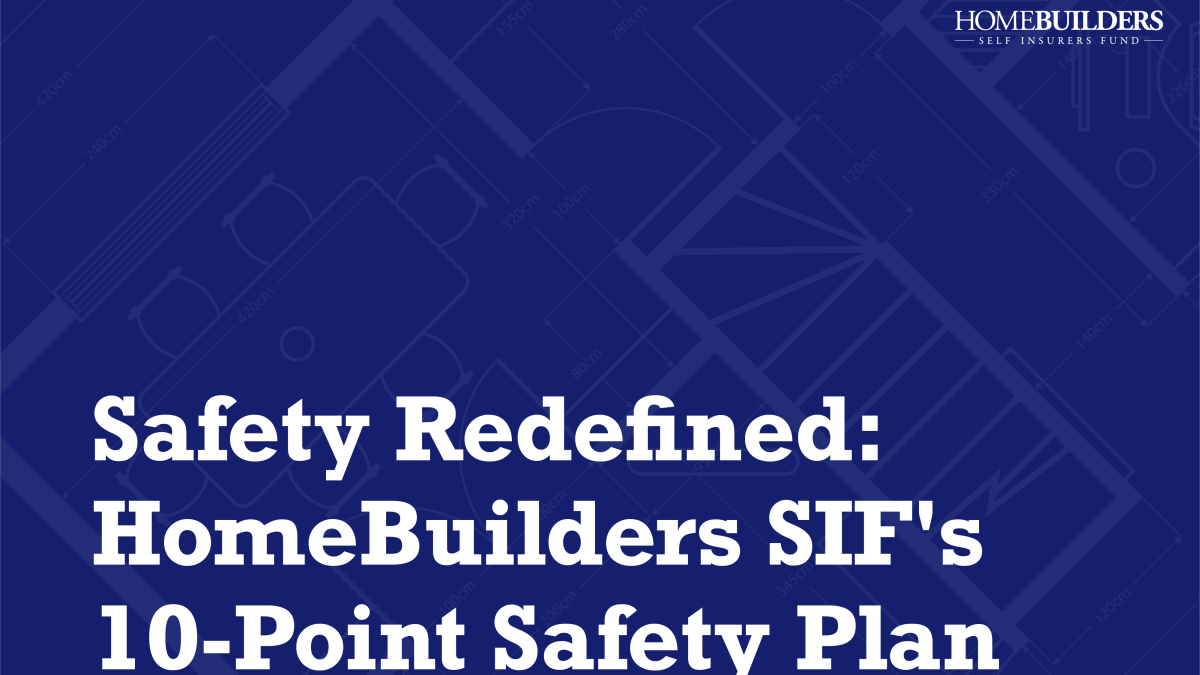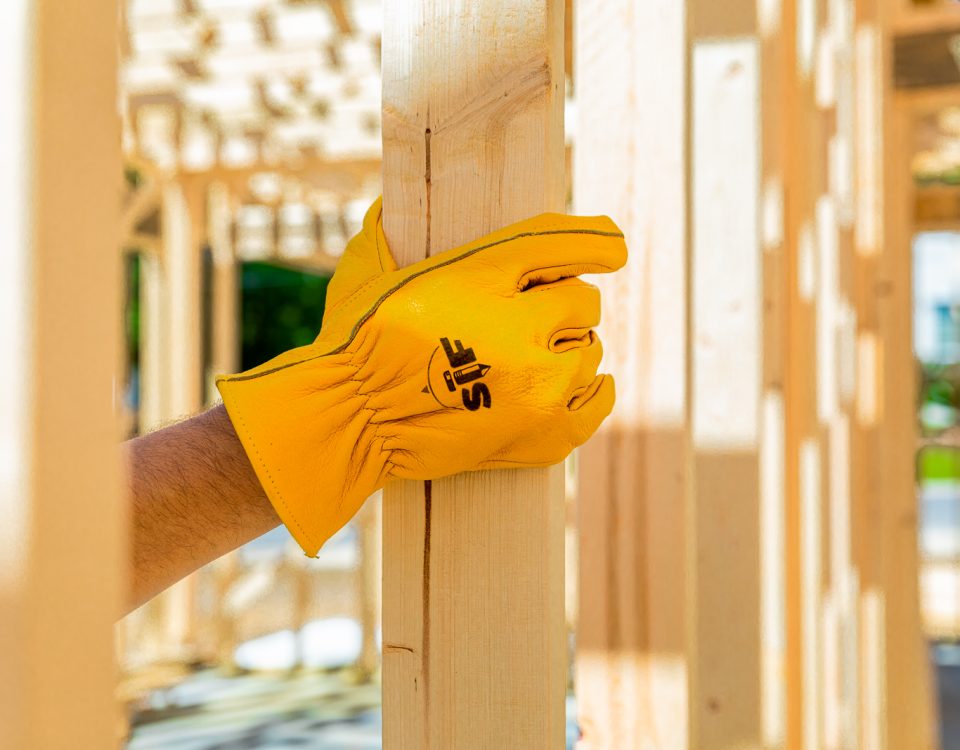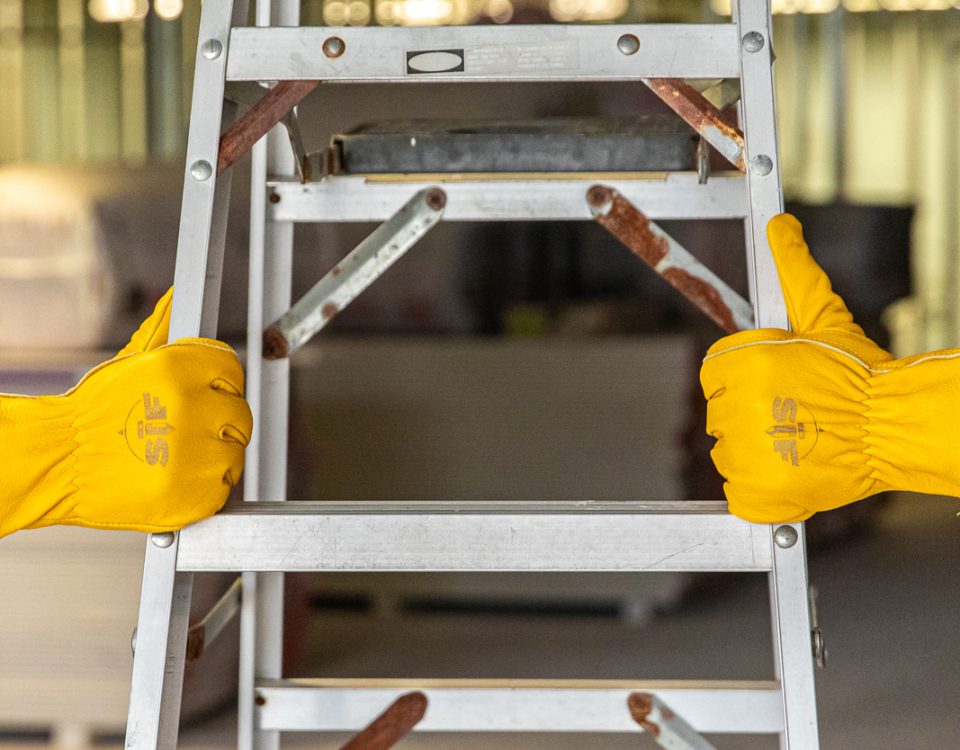
New Year, Lower Rates!
January 11, 2024
Coverage that Does More: Returns, Renewals & Loss Ratio
July 10, 2024At HomeBuilders SIF, the safety of our members and their employees is our top priority. To help members establish and maintain a safe work environment, we are committed to providing the necessary resources to help our members implement ideal safety practices.
One of these sample plans includes our 10-Point Safety Plan which provides members with a formal and operational safety management plan designed to fit their unique operational needs. From a Management Policy Statement to an Emergency Preparedness Program, our safety plan makes it easier for members to adopt a formal and operational safety management plan. Check out all 10 points outlined in our customizable manual.
Management Policy Statement
This first document is for the top executive of the company to sign, signifying their acknowledgment of management’s accountability and dedication to a safety plan. This also expresses their commitment to adhere to all relevant local, state and federal safety regulations and industry standards.
Assignment of Responsibilities
This section of the safety plan outlines and defines the safety responsibilities for executive and middle-level operating management, supervisors, safety coordinator, safety committee (if applicable) and employees.
Inspections
Safety inspections are not only a key factor in preventing injuries, accidents and violations, but they also support a business’ overall success. This document outlines the purpose of safety inspections, how to conduct them and what equipment and activities should be inspected.
Accident Investigation
In the event that an employee is injured, an accident investigation should take place as soon as the injured individual has received medical attention. This section of the safety plan explains what an accident investigation is, why it is important, how to conduct it and the corrective measures that a business should follow. This section also includes a Supervisor’s Investigation Report document, an investigation guide and steps for accomplishing corrective suggestions.
Safety Meetings
Though safety meetings should be held at least once a month, businesses should also hold safety meetings after any accidents occur and new equipment, processes or procedures are introduced. This point in the safety plan outlines items and topics to include in safety meetings and the importance of following up with employees after conducting safety meetings.
Safety Rules
When it comes to ensuring the health and welfare of employees, safety rules are essential. Here, members can find a detailed list of safety rules covering topics from personal conduct and physical condition to clothing and safety equipment. This section also includes details explaining the importance of compliance with safety rules.
Training
This section of the safety plan lists out different types of training businesses should provide to new employees and/or existing employees as required under federal, state and local regulations. It also includes a list of annual training for all individuals in supervisory positions.
Record Keeping
In addition to OSHA logs, which are retained for five years (a federal requirement), each firm shall maintain other safety records for a period of one year from the end of the year in which the records are maintained (a state requirement). At this point of the safety plan, members are provided with lists of different records they should maintain.
First Aid
This section provides members with a statement that their business shall adopt and implement a first-aid program that will provide for a trained first aid person and first aid kit at each job site on each shift.
Emergency Preparedness Program
Lastly, members are provided with an outline stating that management shall develop a written emergency preparedness plan to ensure to the extent possible the safety of all employees, visitors, contractors and vendors in the facility at the time of emergency situations.
By ensuring the safety of our members and the well-being of those in the home building industry, we make it easy for members to create and implement a culture of safety that supports the overall success of their business and team. For more information on our 10-Point Safety Plan and other safety resources, check out our Workplace Safety Library!




